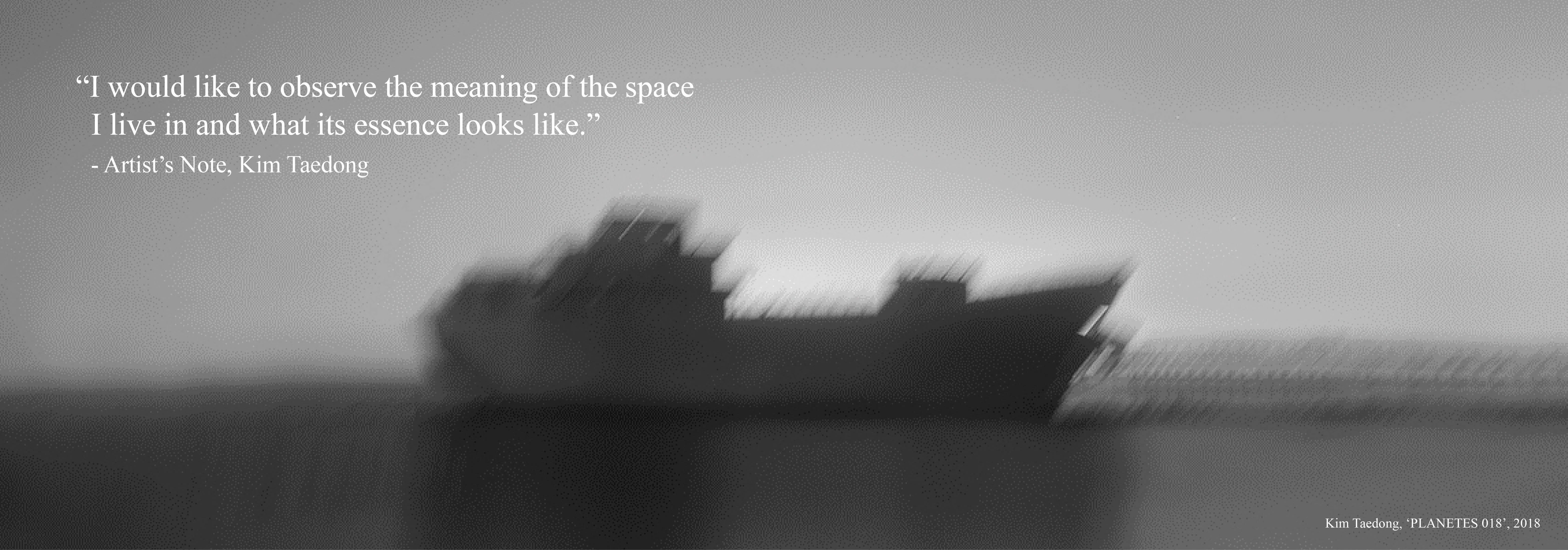Opening September 9, 2020. UARTSPACE is pleased to present < Starlight: Relics of Time > an exhibition of recent work by Kim Taedong, who has calmly expressed the city’s boundaries with unfamiliar and slanted eyes. The exhibition will showcase 14 works that show consideration of the stars and shaky targets, which began with the 2019 Amado Artspace photo award exhibition < PLANETES >.

Exhibition view 'Starlight: Relics of Time
The reason why Kim Taedong’s picture of the star is special is that the shining star is not the focal point.
The ‘PLANETES’ series is a work that began in 2015 with the Real DMZ Project. Since the 2010 ‘Day Break’ series, he has been working on showing the night continuously; however it was not easy for the artist to shoot the night in a place that retained the scars of war. As the darkness deepened, ironically, the stars in the sky sparkled more beautifully, and the author naturally began to capture the stars in his work. Starting with work on the outskirts of the city, work was carried out in villages near the DMZ and war sites across the country, as well as in Canberra, Australia (cooperation with the Australian War Memorial), and Seoul, where the star was placed little by little.
The main characters that the artist talks about in the works of shining stars are not stars, but shaky subjects. In this exhibition, all works except for Rifling 037 will be accompanied by a variety, architecture, and urban landscape.

Kim Taedong, Day Break-044, 2011, Archival Pigment Print
Besides, long-term exposure (a photo technique that prolongs shutter speed and leaves traces of an object’s movement as a stationary image) and astronomical equipment called the equator were used to track and take pictures of star movements for a long time. As the time of the star was fixed, subjects on the ground are shown shaking in the picture. Through this, the artist felt a sense of tension and liveliness. The subject became such a relic of time and was able to capture various times in a simple photograph.
The movements of the exhibition follow the changes in the artist’s mind and the order of time. Starting with Rifling 040, one of the war-related works, the photos centered on space for tension were placed in the first half, star-centered pictures were placed in the second half, and finally, the pictures naturally returning to the city along with the stars. Through this exhibition, the artist hopes to look back on the times of civilization, which are repeatedly destroyed and rebuilt against the infinite time of the stars.

Kim Taedong, Rifling 040, 2017, Archival Pigment Print, 134 x 100 cm
The artist says that an exhibition without portraits feels awkward because there have always been portraits of people in exhibitions. However, the reason why we can feel more humanity in these works is probably because of the shaky subjects.
As astrophysicist Carl Sagan said, “Every human being who ever was, lived out their lives on a mote of dust suspended in a sunbeam.” Humans may be insignificant from the perspective of the universe, but the story of people who have always been felt in Kim Tae-dong’s photographs reveal his presence by representing us with subjects swaying under the starlight of the vast universe.




















